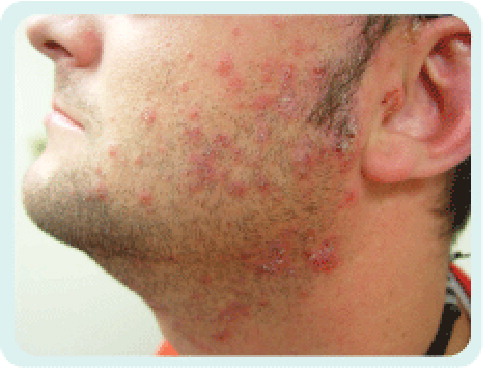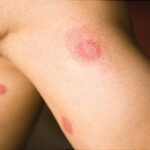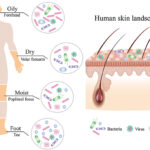Enterococcus species, primarily Enterococcus faecalis and Enterococcus faecium, are gram-positive, facultative anaerobic cocci that commonly inhabit the gastrointestinal tract. Although often considered low-virulence organisms, they have emerged as significant nosocomial pathogens, particularly in skin and skin structure infections (SSSIs), where their intrinsic resistance and capacity to acquire new resistance genes complicate treatment.

Pathogenesis of Enterococcus in Skin and Soft Tissue Infections
Enterococci exhibit several mechanisms that support their role in SSSIs:
- Biofilm formation: Enhances persistence in chronic wounds and device-associated infections
- Adhesion molecules: Facilitate tissue colonization
- Intrinsic antibiotic resistance: Including low-level resistance to aminoglycosides and cephalosporins
- Acquired resistance: Notably vancomycin-resistant Enterococcus (VRE), which poses a serious therapeutic challenge
Their ability to survive under harsh environmental conditions and evade host immunity enables Enterococcus to cause persistent and recurrent skin infections, especially in compromised hosts.
Clinical Spectrum of Enterococcus Skin and Skin Structure Infections
Wound Infections
- Frequently polymicrobial, especially in surgical wounds and pressure ulcers
- Purulence, surrounding erythema, pain, and delayed healing
- Common in postoperative sites and chronic ulcers
Cellulitis
- Less aggressive than streptococcal cellulitis
- Characterized by localized swelling, redness, warmth, and mild systemic signs
- Often occurs in conjunction with other bacteria
Diabetic Foot Infections
- High prevalence of Enterococcus species in chronic diabetic wounds
- Associated with prolonged healing and increased risk of osteomyelitis
Surgical Site Infections (SSIs)
- Common in abdominal and urologic procedures
- Can involve subcutaneous tissue and deeper fascial layers
- Often complicated by multidrug-resistant strains
Risk Factors for Enterococcal SSTIs
| Risk Factor | Contribution to Infection |
|---|---|
| Hospitalization >48 hours | Exposure to resistant strains |
| Immunocompromised status | Impaired ability to fight infection |
| Prolonged antibiotic exposure | Selection pressure for resistant Enterococcus strains |
| Indwelling catheters or drains | Biofilm formation and direct inoculation |
| Pressure ulcers and wounds | Breach in skin barrier and colonization |
| Diabetes mellitus | Impaired neutrophil function and poor perfusion |
Diagnostic Evaluation: Identification and Sensitivity Testing
Clinical Assessment
- Inspection for signs of local infection: erythema, edema, exudate
- Palpation for induration or fluctuance (abscess formation)
- Assessment of systemic involvement: fever, chills, leukocytosis
Laboratory Investigations
- Wound cultures: Tissue biopsy or aspirate preferred over surface swab
- Gram stain: Reveals gram-positive cocci in pairs or short chains
- Blood cultures: Indicated in systemic symptoms or suspected bacteremia
- Antimicrobial susceptibility testing: Crucial to identify VRE and high-level aminoglycoside resistance
Imaging
- X-ray or MRI: Used in suspected osteomyelitis or deep tissue involvement
- Ultrasound: Helpful in identifying abscesses
Antimicrobial Resistance in Enterococcus
Enterococci are challenging due to their resistance profile:
- Intrinsic resistance: Low-level resistance to beta-lactams and aminoglycosides
- Vancomycin-resistant Enterococcus (VRE):
- VanA and VanB genes: Most common resistance mechanisms
- Limits use of vancomycin, requiring alternatives like linezolid or daptomycin
- High-level aminoglycoside resistance (HLAR):
- Eliminates synergy with cell wall-active agents
- Beta-lactamase production (rare but possible)
Treatment of Enterococcus Skin and Skin Structure Infections
Empiric Therapy
Consider likely polymicrobial nature and resistance patterns:
- Vancomycin: First-line for suspected resistant Enterococcus
- Ampicillin: Preferred if susceptibility confirmed, especially for E. faecalis
- Piperacillin-tazobactam: Covers polymicrobial infections including anaerobes
- Linezolid: Effective against VRE; suitable for oral and IV administration
- Daptomycin: Bactericidal against resistant strains; not suitable for pneumonia
- Tigecycline: Broad-spectrum but limited by low serum levels and adverse effects
Targeted Therapy
Based on sensitivity:
| Strain | Preferred Therapy |
|---|---|
| Ampicillin-sensitive | Ampicillin |
| Vancomycin-sensitive | Vancomycin |
| VRE (VanA/VanB) | Linezolid or daptomycin |
| HLAR strains | Linezolid (avoid gentamicin) |
Duration of Therapy
- Uncomplicated cellulitis: 7–10 days
- Complicated SSTIs or SSIs: 10–21 days
- Chronic or deep infections: Prolonged, based on clinical response
Surgical and Supportive Management
- Incision and drainage: Mandatory for abscesses and fluctuant collections
- Debridement: Removes necrotic tissue and reduces bacterial burden
- Wound care: Moist wound healing, antiseptic dressings
- Glycemic control: Especially critical in diabetic foot infections
- Nutritional support: Essential for immune function and healing
Preventive Measures and Infection Control
Hospital-Based Strategies
- Hand hygiene and contact precautions for patients with VRE
- Environmental cleaning and equipment disinfection
- Surveillance cultures during outbreaks
- Staff education on antimicrobial stewardship
Community and Outpatient Measures
- Proper wound care and hygiene
- Avoid unnecessary antibiotic use
- Prompt management of pressure ulcers and chronic wounds
Complications of Untreated Enterococcal SSTIs
| Complication | Description |
|---|---|
| Bacteremia | May result in endocarditis in at-risk patients |
| Chronic infection | Especially in poorly vascularized tissues |
| Necrotizing fasciitis | Rare but severe polymicrobial infection |
| Osteomyelitis | Especially from contiguous spread |
| Increased resistance | Resulting from inappropriate antibiotic use |
Prognosis and Outcomes
Prognosis depends on early diagnosis, appropriate therapy, and host factors. VRE and deep-seated infections pose greater risks.
| Infection Type | Prognosis |
|---|---|
| Uncomplicated wound | Excellent with proper care |
| VRE-related SSTI | Variable; higher treatment failure |
| Diabetic foot infections | Risk of recurrence and amputation |
| Post-surgical infection | Requires source control and antibiotics |
Enterococcus species, although traditionally considered low-virulence organisms, are now formidable pathogens in skin and skin structure infections due to rising antimicrobial resistance and prevalence in healthcare-associated settings. Effective management requires a multidimensional approach involving accurate identification, tailored antibiotic therapy, surgical intervention, and rigorous infection control practices. Early recognition and intervention remain the key to optimal clinical outcomes in enterococcal SSTIs.

